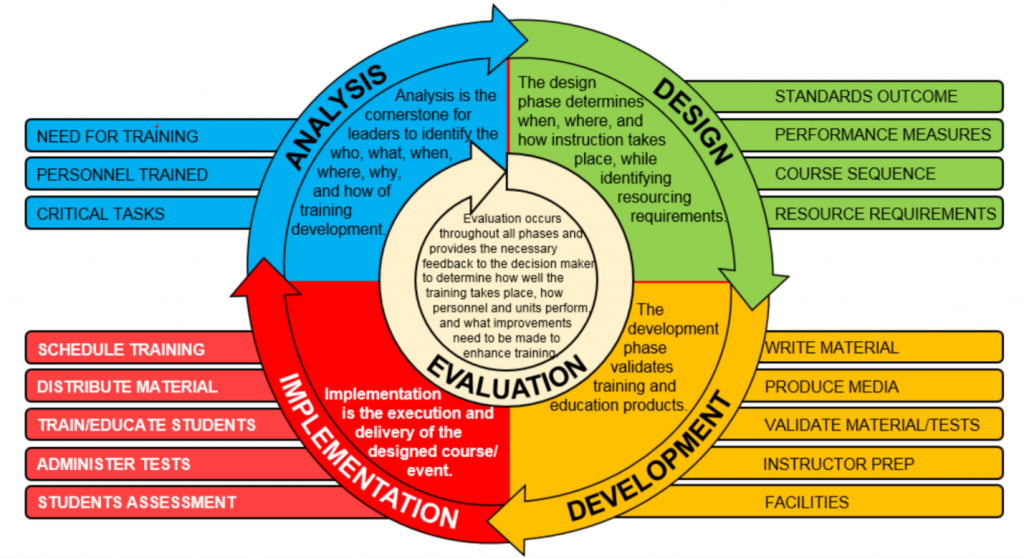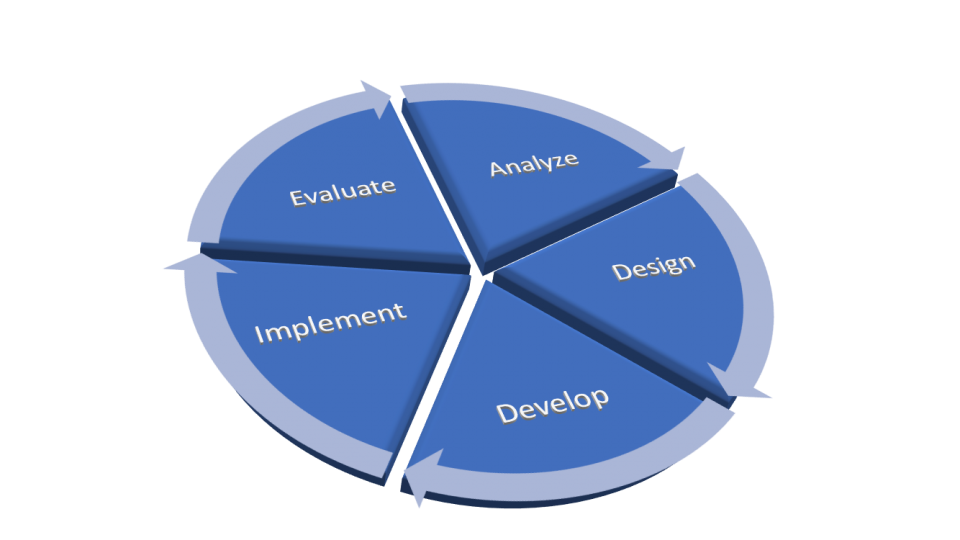Meet ADDIE (Part 1)
Microsoft News, in partnership with Microsoft 365, has helped newsrooms around the world tailor their use of Microsoft 365 products effectively for operational workflow and news reporting.
As a corporate trainer for 20+ years, I’ve taught people in many industries to use technology products and services: The journalism world has been as a fantastic opportunity to learn a completely new space and adapt the same teaching principles. Doing so, I’ve observed a lot of parallels between developing training content and reporting the news.
In Learning & Development, many of us use the ADDIE model. Like so many inventions, this has roots in the military.
Development of ADDIE
In the early seventies, the US Army knew that changes in technology and budgets meant they needed a new system for training.
Today with rapidly expanding technology and a more widespread distribution of knowledge and resources throughout the world, it often takes a double effort simply to maintain optimal readiness. There are current indications that success in future military confrontations will require a strong immediate first strike capability.
One prime element in battlefield performance is properly trained personnel. The continuing process of improving current training systems through identifying the most successful instructional technologies is an integral part of effective training efforts. Utilizing the best, established approaches to the analysis, design and development of instruction may well represent the optimum methodology for insuring the maintenance of a well-qualified military force. And, with increasing emphasis on cost efficiency in all military endeavors and decreasing defense budgets, there is understandable widespread interest in deriving the maximum benefit possible from every dollar devoted to the training effort.
So in 1973, as techniques and technology became more complex, the United States Army Combat Arms Training Board in Georgia worked with Florida State University’s Center for Educational Technology to improve the process of training.
On 29 May 1973, a contract was entered into between the Center for Educational Technology and the U.S. Army Combat Arms Training Board (Contract No. N61339-73-C-0150). Task I of this contract involved the analysis and assessment of the state-of-the-art in training technology and the application of the concepts identified in the analysis to the current mission of the TRADOC School system…
On August 18, 1975, the revised version of the 1, LSD Manuals [sic] was completed by the contractor and delivered to the Combat Arms Training Board. Results of various tryout efforts will be evaluated with the objective of gathering information from which future revisions can be made.
Now, 45 years later, The ADIE model remains the training standard in use.
The Army Learning Policy and Systems design process emphasizes the ADDIE process. ADDIE provides for effectiveness and efficiencies by developing continuous awareness of the relationships among the component parts, rather than a linear approach. The five phases of ADDIE enable the creation of integrated, mission essential products that support any type of learning and professional growth. ADDIE is the basis of a systematic, non-linear, ongoing approach to conceiving, planning, organizing, and documenting all unit and individual learning products. Army Learning Policy and Systems adds management as an overarching and integral component.
— Training Development in Support of the Operational Training Domain, United States Army Training and Doctrine Command Administrative Publications
The Phases of ADDIE
The 5 Phases of this model that Instructional designers all over the world use today are:
A – Analyze
D – Design
D – Develop
I – Implement
E – Evaluate
Over the years, while the model has evolved, it has become less linear or proscriptive and become more cyclical and iterative, the core concepts remain the same. They are incredibly useful, even as learning and learners have evolved and changed.

Some (especially SAM adherents) may argue that the “waterfall” approach ADDIE was initially designed around is outdated in the era of Agile development; where developers write software in small, deliverable modules rather than building a software package from a fixed list of features.
I still find ADDIE relevant as the framework is flexible enough to accommodate non-linear development. While an instructional designer can use it as a strictly timeline-based tool, the model is most valuable as a mental framework for understanding the different components of effective learning content development. Even as I sometimes go “out of order” on some steps, I can still track what I’m doing and why I make those decisions. When a lesson doesn’t work, this model helps me understand where I may have made a mistake.
In this article series, I’ll take a deeper look at each of those five steps, how Microsoft 365 tools help at each stage, and how journalists could apply those steps to their reporting.
Each step can take weeks or minutes, depending on the nature of the assignment and the experience of the people involved. It’s less about the timeline itself and more about understanding the life cycle of the content creation process.
That’s the basis of the model that instructional designers use to create content. Over the next 5 parts of this series, we’ll take a deeper look at each phase of ADDIE and how journalists can apply these phases to their stories.
Continue to ADDIE Basics for Journalists: A Framework for Crafting Stories — Analyze (Part 2)




